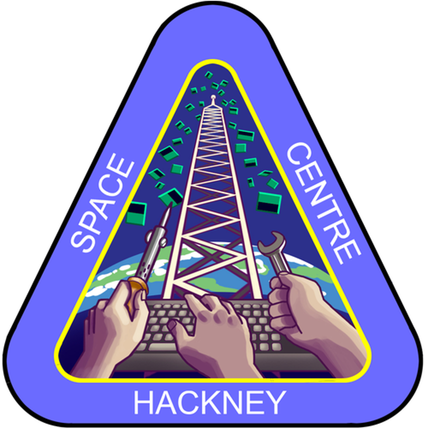Difference between revisions of "Project:Hackney Space Centre"
Jump to navigation
Jump to search
(crap, I intended to preview not save) |
|||
| (39 intermediate revisions by 4 users not shown) | |||
| Line 1: | Line 1: | ||
| − | [[ | + | {{Project|created=27/10/2011|status=On Hold|members=[[User:Flux|Flux]]}}To receive signals from our first satellite, [[Project:HackSat One|HackSat One]], we need to build a ground station and mission control. Hackney Space Centre is based at [http://wiki.london.hackspace.org.uk/view/447_Hackney_Road London Hackspace] (51.53ºN, 0.06ºW). |
| − | + | '''Due to delays in getting the radio mast ready the space centre plan has been put on hold. It may be revived at a later date if there are further space missions.''' | |
| − | + | If you're interested in trying to receive the signal from HackSat (and | |
| − | + | the other KickSat sprites) yourself see [https://github.com/zacinaction/kicksat/wiki/Setting-Up-A-Ground-Station setting up a ground station]. | |
| − | |||
| − | + | [[File:Hackney-space-centre-decal.png]] | |
| − | |||
| − | + | ''Decal created by Nick Cramp.'' | |
| − | + | [[Category:Projects]] | |
| − | + | [[Category:Satellites]] | |
| − | |||
| − | |||
| − | |||
| − | |||
| − | |||
| − | |||
| − | |||
| − | |||
| − | |||
| − | |||
| − | |||
| − | |||
| − | |||
| − | |||
| − | |||
| − | |||
| − | |||
| − | |||
| − | |||
| − | |||
| − | |||
| − | |||
| − | |||
| − | |||
Latest revision as of 11:02, 13 March 2014
| Hackney Space Centre | |
|---|---|
| Created | 27/10/2011 |
| Members | Flux |
| Project Status | On Hold |
| QR code | |
To receive signals from our first satellite, HackSat One, we need to build a ground station and mission control. Hackney Space Centre is based at London Hackspace (51.53ºN, 0.06ºW).
Due to delays in getting the radio mast ready the space centre plan has been put on hold. It may be revived at a later date if there are further space missions.
If you're interested in trying to receive the signal from HackSat (and the other KickSat sprites) yourself see setting up a ground station.
Decal created by Nick Cramp.
